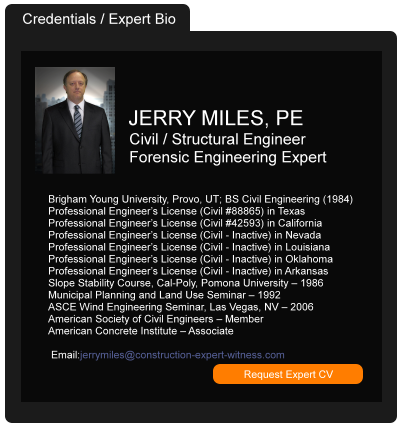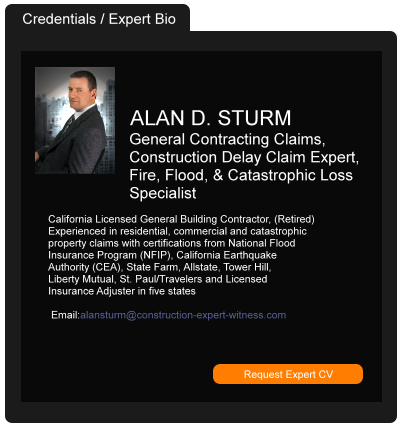ASCE Statement on Passing of Senator Dianne Feinstein
October 02, 2023 —
Maria Lehman, President – American Society of Civil EngineersRESTON, Va. – ASCE joins Capitol Hill and the infrastructure community in mourning the loss of Senator Dianne Feinstein (D-CA). At 90 years old, Sen. Feinstein was the longest-tenured female senator in U.S. politics and an immensely influential voice in the U.S. Senate and her home state of California. A true pioneer in U.S. politics, Sen. Feinstein was the first female mayor of San Francisco and one of the first women elected to the U.S. Senate from California.
During her three decades in the Senate, Sen. Feinstein was a staunch advocate for issues impacting the engineering profession and strongly supported the recent passage of the bipartisan Infrastructure Investment and Jobs Act (IIJA). Sen. Feinstein was a champion for legislation to mitigate the impacts of climate change, a strong supporter of bills to improve drinking water for disadvantaged communities, and, in recent years, served as ASCE's key champion for both the reauthorization of the National Dam Safety Program and the 21st Century Dams Act.
Sen. Feinstein consistently sought middle ground on issues that were pertinent to all Americans, a rare and admirable trait in our increasingly divisive political climate. ASCE will remember Sen. Feinstein for all that she accomplished on behalf of our nation's infrastructure, and we look forward to continuing her fight to ensure our infrastructure systems can withstand the impacts of increasingly severe weather events. Our deepest sympathies go out to her family.
ABOUT THE AMERICAN SOCIETY OF CIVIL ENGINEERS
Founded in 1852, the American Society of Civil Engineers represents more than 150,000 civil engineers worldwide and is America's oldest national engineering society. ASCE works to raise awareness of the need to maintain and modernize the nation's infrastructure using sustainable and resilient practices, advocates for increasing and optimizing investment in infrastructure, and improve engineering knowledge and competency. For more information, visit www.asce.org or www.infrastructurereportcard.org and follow us on Twitter, @ASCETweets and @ASCEGovRel.
Read the court decisionRead the full story...Reprinted courtesy of
What You Need to Know About Additional Insured Endorsements
August 30, 2017 —
Gary Barrera - California Construction Law BlogA well-drafted insurance clause is an integral part of a construction contract because it sets forth a subcontractor’s obligations to add the general contractor to its policies of insurance as an additional insured and identifies the manner by which the general contractor will qualify as an additional insured. In a typical construction contract, the general contractor will be an additional insured via a scheduled endorsement or a blanket endorsement.
Scheduled Endorsements
A scheduled endorsement contains a “schedule” in which the person or organization that is named in the schedule is added to the policy as an additional insured. The following scheduled endorsements are commonly used in construction contracts.
Read the court decisionRead the full story...Reprinted courtesy of
Gary Barrera, Wendel Rosen Black & Dean LLPMr. Barrera may be contacted at
gbarrera@wendel.com
General Contractors Can Be Sued by a Subcontractor’s Injured Employee
November 05, 2014 —
Craig Martin - Construction Contractor AdvisorGeneral contractors that exercise control over the worksite can be sued by a subcontractor’s injured employee. The Nebraska Supreme Court’s recent opinion, Gaytan v. Wal-Mart, should serve as a reminder that general contractors may be responsible for the safety of all workers on a job site.
In this case, a roofing subcontractor’s employee died after falling through the roof of the under-construction Wal-Mart. The deceased employee’s estate sued Wal-Mart and Gram Construction, the general contractor, alleging that they were negligent in maintaining a safe worksite.
The court initially acknowledged that an owner, the employer of an independent contractor, does not typically owe a subcontractor’s employee a duty because the owner typically has no control over the manner in which the work is to be done by the contractor. This general rule, however, has exceptions, such as where the owner retains control over the contractor’s work. But, for the exception to apply, the owner must have (1) supervised the work that caused the injury, (2) actual or constructive knowledge of the danger that caused the injury, and (3) the opportunity to prevent the injury.
Read the court decisionRead the full story...Reprinted courtesy of
Craig Martin, Lamson, Dugan and Murray, LLPMr. Martin may be contacted at
cmartin@ldmlaw.com
Legal Disputes Soar as Poor Information Management Impacts the AEC Industry
July 03, 2022 —
Ideagen PlcManagers in Architecture, Engineering and Construction (AEC) are facing more disruptive disputes in 2022 compared to last year according to the latest independent research from regulatory compliance company Ideagen.
The survey of business leaders from AEC firms in the US and UK revealed that 78% of respondents experienced some kind of dispute in the business, compared to 63% in 2021, with information accessibility and visibility, caused largely by high staff turnover, the main root causes. With the challenges that the industry continues to face following COVID and increasing costs of materials, this is an added but unnecessary challenge facing the industry.
Stuart Rowe, Vice President of Collaboration Strategy at Ideagen, whose customers include the US Navy, Gensler, Arup and Ramboll, said: "The working world has continued to change in the last 12 months, which is reflected in the AEC industry's evolving priorities. The COVID-19 pandemic led to a huge shift to remote working which saw an increased need for effective collaboration tools, however, this year is appears that hybrid working is the new normal in the industry.
"Four-fifths of the people we spoke to said email is still king for project correspondence. This is a huge concern as most project scope changes reside in email inboxes. Failing to properly manage all information and records also prevents a Golden Thread, or a Single Source of Truth, across projects and businesses."
Ideagen undertook the independent survey to support developments to their Mail Manager software, used by 2,500 architecture, engineering and construction firms in 16 countries worldwide. It revealed a number of insights into how the industry is managing changing work patterns. Download the full research
here.
Read the court decisionRead the full story...Reprinted courtesy of
Automating Your Home? There’s an App for That
April 03, 2013 —
CDJ STAFFWriting in the New York Times, Nick Wingfield looks at both the promise and failures of home automation, starting with a timer which had “buttons the size of a small seed” and was too difficult to reset. Wingfield said the timer “made my house dumber.”
He moves on to the useful items, such as the Nest thermostat, which improves on his previous programmable thermostat by being able to determine when people are actually home (so an empty house isn’t being heated) and it can be controlled from a smartphone app, useful for the taxi on the way home from the airport. The Belkin WeMo Switch allows users to control lamps from an iOS app and the timer functions can be accessed without having to use seed-sized buttons.
For those with bigger home automation budgets, there are now companies setting up whole house systems, including thermostat, light controls, motion detectors, surveillance cameras, and even monitors for your hot water heater and the level of carbon monoxide in your home. These systems start at around $1,500 but quickly go past $5,000. Other packages are sold on a month-by-month basis. And they include apps.
Read the court decisionRead the full story...Reprinted courtesy of
Used French Fry Oil Fuels London Offices as Buildings Go Green
December 10, 2015 —
Siobhan Wagner – BloombergPricewaterhouseCoopers LLP’s office above Charing Cross railway station in London is cooled, heated and fueled by an unlikely source: used cooking oil.
The system, which helped the property become the greenest building in the U.K. capital, uses oil refined less than two miles away at London Bridge. It also helps prevent an invisible problem: “fatbergs” formed when oils dumped in drains and pipes congeal with baby wipes and diapers and block the city’s sewers.
“We’re using London’s waste to fuel a London office building,” said Jon Barnes, head of building at PwC. The system contributed toward a one-third reduction in electricity costs after a two-year refurbishment of the One Embankment Place office building that finished last year.
Read the court decisionRead the full story...Reprinted courtesy of
Siobhan Wagner, Bloomberg
When it Comes to Trials, it’s Like a Box of Chocolates. Sometimes You Get the Icky Cream Filled One
October 14, 2019 —
Garret Murai - California Construction Law BlogAccording to the California Judicial Council you have about a one in three chance your case will go to trial. In 2018, of the 210,028 unlimited civil cases that were filed (i.e., cases with an amount at issue of more than $25,000) only 33 percent made it all the way to trial. The odds are even less if you’re involved in a limited civil case (i.e., cases with an amount at issue of less than $25,000) where only 15 percent make it all the way to trial.
The reason: Lawyers are expensive. The other reason: Trials are risky. As well prepared as your counsel may be for trial, when it comes to trials, like boxes of chocolates, “Ya never know what you’re gonna get.” And sometimes you really, really don’t know what you’re going to get.
I had a client involved in a trial once. The defendant’s representative at trial was a well-to-do young man and heir to a hotel fortune. He was young, athletic and had a confident, carefree way about himself that reminded me of “Dickie” Greenleaf from the Talented Mr. Ripley. And I wasn’t the only one who noticed.
Read the court decisionRead the full story...Reprinted courtesy of
Garret Murai, Wendel, Rosen, Black & Dean LLPMr. Murai may be contacted at
gmurai@wendel.com
Is Safety Compliance Putting Your Project in Jeopardy? Examining the Essentials of DOE’s Worker Safety and Health Program
July 02, 2024 —
Lucas T. Daniels & Benjamin J. Hochberg - ConsensusDocsMost contractors are familiar with the myriad of labor and safety regulations intended to safeguard the health and safety of workers. Many contractors will be equally familiar with the maze of forms and reports, the maintenance of safety personnel, safety walks and talks, and the many other measures intended to prevent and prepare for accidents. Less known among contractors and construction industry leaders is the regulatory framework establishing safety requirements and the ramifications of ignoring safety-related rules. Knowing and understanding the jurisdiction and authority of the agencies monitoring safety compliance on your project is critical to avoiding administrative ordeals and audits that could add days or weeks to your schedule and frustrate your staff.
The Department of Energy’s Worker Safety and Health Program
Under the Occupational Safety and Health Act of 1970, as amended (OSH), the Department of Labor’s Occupational Safety and Health Administration (OSHA) issues and enforces occupational health and safety regulations. OSHA, or a state with approval from OSHA, regulates the occupational health and safety of private sector employees unless another federal agency has and exercises its statutory authority to regulate. Several federal agencies have developed their own safety programs and conduct their own enforcement of those regulations independent of OSHA. For example, projects receiving funding from the Department of Energy (DOE) are subject to additional oversight of their safety programs by this agency. DOE directly manages its own Worker Safety and Health Program (WSHP), codified at 10 C.F.R. § 851, et seq., and will enforce compliance with its WSHP at all DOE sites. A “DOE site” is defined as a DOE-owned or -leased area or location or other area or location that DOE controls, where a contractor performs activities and operations in furtherance of a DOE mission. This broad definition encompasses a wide range of facilities and operations, including those not directly managed by the DOE but still under its control. The contractor at such a site must be aware of the specific requirements and procedures of the DOE under the WSHP and the ramifications of violating these regulations.
Reprinted courtesy of
Lucas T. Daniels, Peckar & Abramson, P.C and
Benjamin J. Hochberg, Peckar & Abramson, P.C
Mr. Daniels may be contacted at ldaniels@pecklaw.com
Mr. Hochberg may be contacted at bhochberg@pecklaw.com
Read the court decisionRead the full story...Reprinted courtesy of


































































